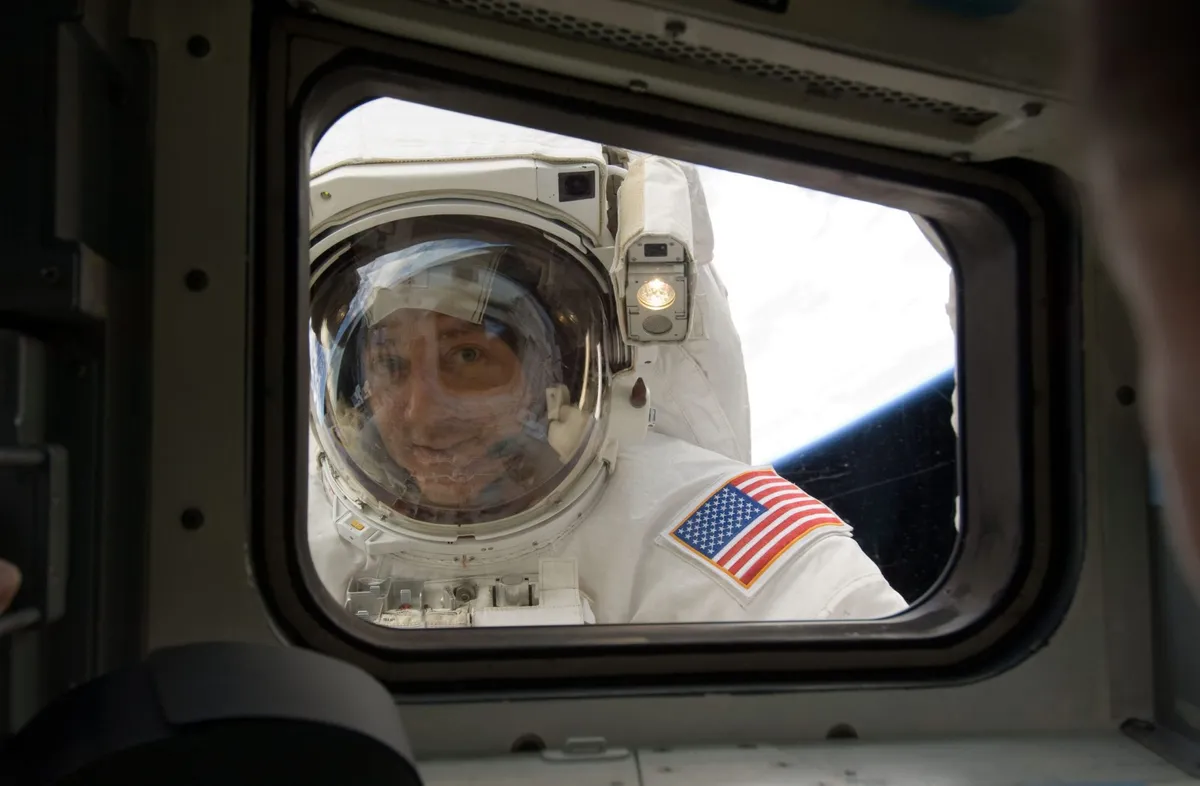Selected by NASA for the astronaut training programme in 1996, Michael J. Massimino’s academic specialism focused on human-machine systems. He took part in the fourth and final Hubble servicing mission, before leaving NASA in 2014 to continue his academic research and teach at Columbia University.
“You didn’t have to be extremely strong,” Mike Massimino says about spacewalking on Hubble, “but you needed to be fit.”
Read more about the history of Hubble:
- Three decades of the Hubble Space Telescope
- Astronaut Kathryn Sullivan on launching Hubble
- Hubble's successor: the James Webb Space Telescope
He flew twice to the telescope and spacewalked on it four times. “We got more and more ambitious, based on what we learned from the first missions,” he reveals.
Massimino, currently senior advisor for space programs at the Intrepid Museum in New York, noted that STS-61 faced many unexpected obstacles on Hubble for the first time: from warped equipment bay doors to bent solar array masts.
“They didn’t have time to figure it out,” he recalls. “They were in space.”
We would develop a new tool or technique, because the more time we could save, the more things we could do. If you didn’t get it done, it wasn’t going to get done on that mission – or maybe ever.
Massimino remains convinced that later Hubble crews benefitted immeasurably from STS-61.
“If you look at what we ended up doing on the later missions, the tasks were more complex than they did on the first ones, but I don’t think it was any more difficult, because we had learned from what those guys had done,” he explains.
“The first servicing mission was probably the most challenging. They were there to save the telescope and do these things for the first time. We were following in their footsteps.”
Back-to-back spacewalks were equally tough. “It was pretty tiring,” says Massimino. “As soon as you’ve done one, you have to get ready for the next one the next day, and sometimes they ran ‘long’.
"We really had to work as a team to get it done and work well with the ground controllers as well.”

That responsibility was a heavy weight. “It was a lot of spacewalks and you could make mistakes, but there were consequences,” Massimino cautions.
“You had to be delicate. With the Space Station, you weren’t encouraged to be rough, but Hubble was really delicate.
"You had to be mindful of where you were, what you touched, what you knocked into. You couldn’t use the same method that you used on the Space Station.”
Added to that fact was the infrequency of Space Shuttle visits to Hubble. “On the Space Station, things you didn’t get done, you could come back in a year and do them,” he says.
“With Hubble, you either did it or it wasn’t getting done. We would develop a new tool or technique, because the more time we could save, the more things we could do.
"If you didn’t get it done, it wasn’t going to get done on that mission – or maybe ever.”
Read more about Mike Massimino via his Columbia University web profile. This interview originally appeared in Hubble: 30 Years of Discovery, a new special edition magazine available now.